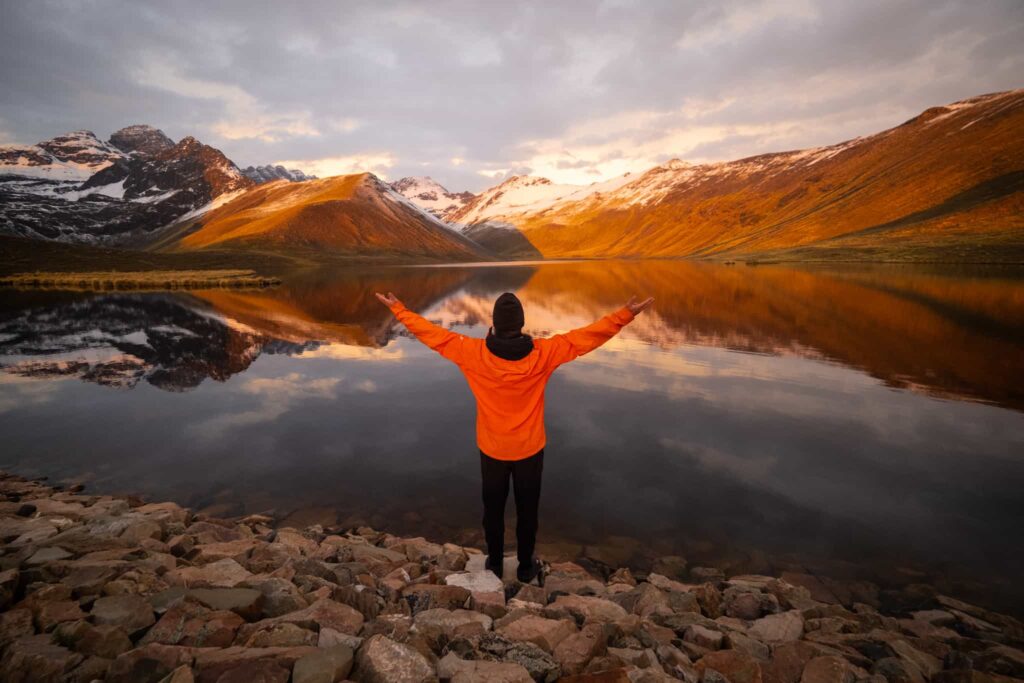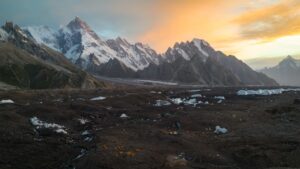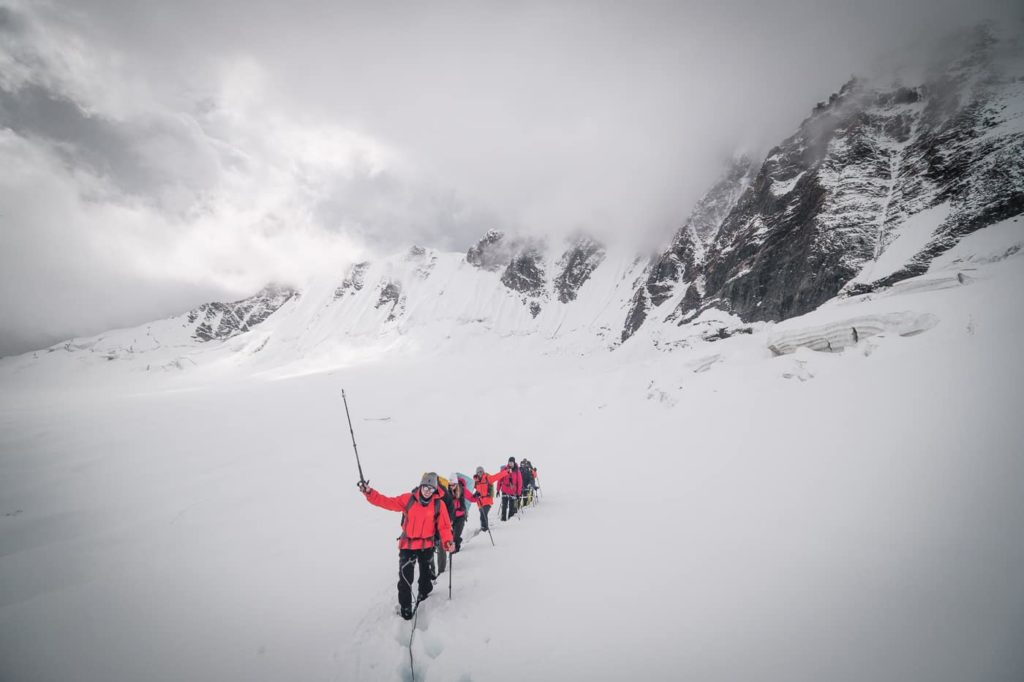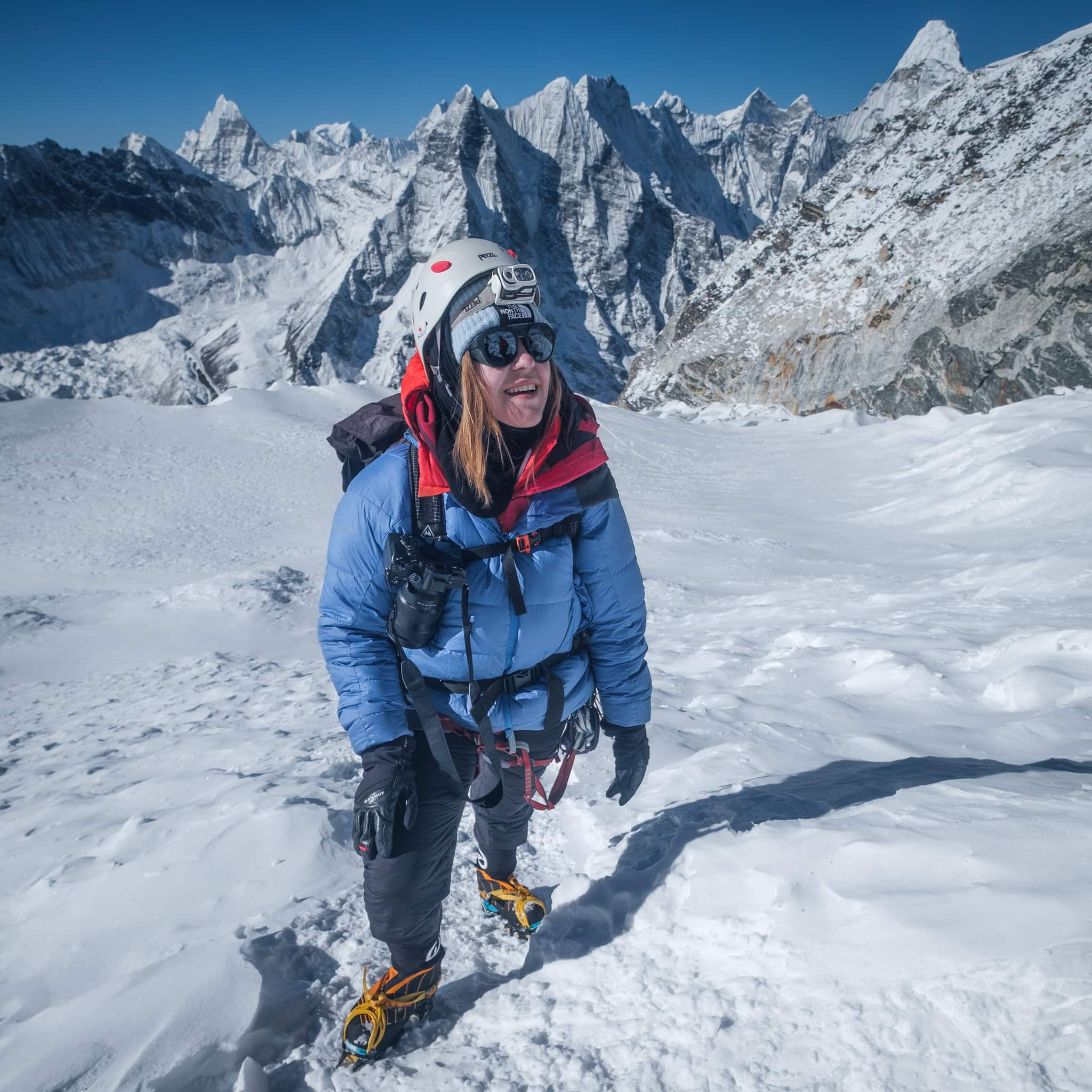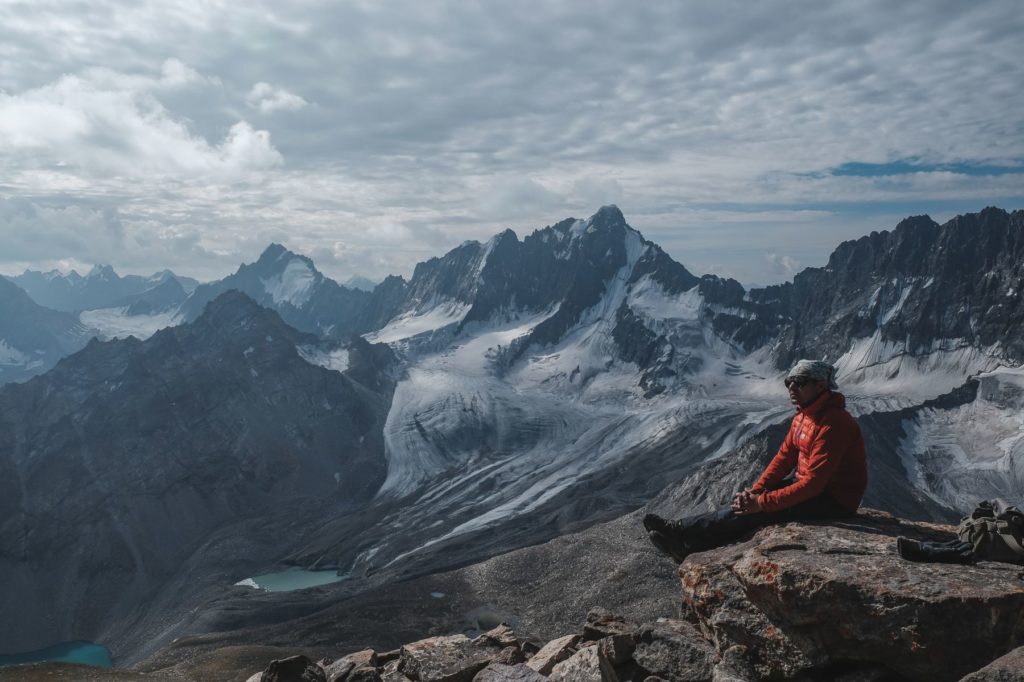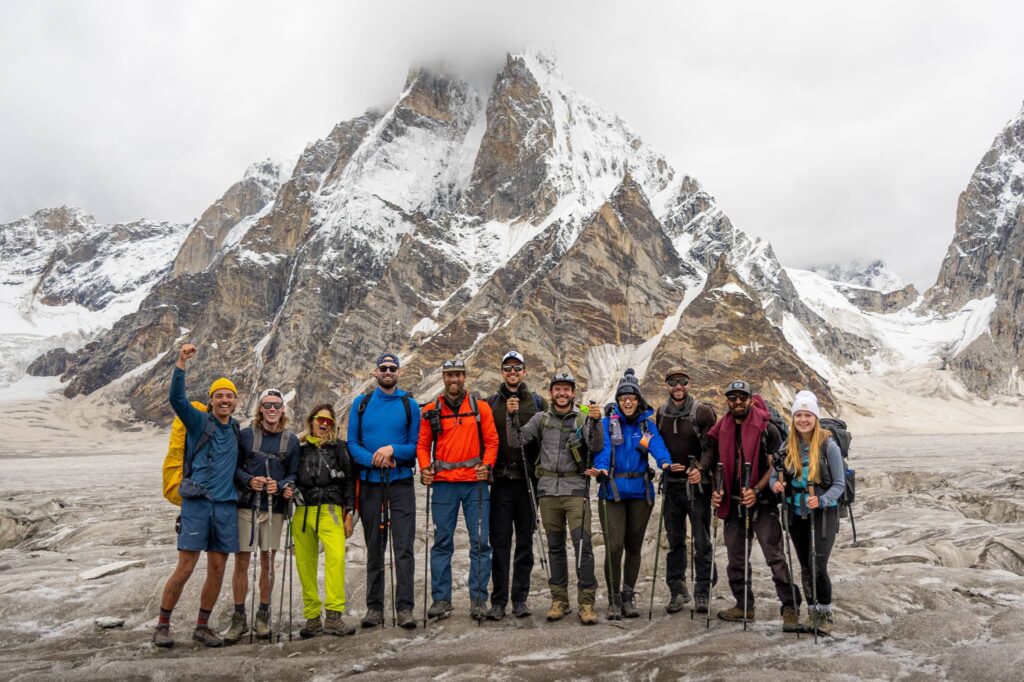If you ask someone who has just been traveling in Bolivia how their trip was – it is all but guaranteed that at some point during the conversation, the topic of altitude will come up.
Bolivia is one of the most underrated countries in the world for adventure activities like hiking and mountaineering – this is undoubtedly true. But many travelers underestimate the high elevations found across this Andean nation. From the moment you land in La Paz, you are dealing with high altitude and the associated effects.
Our Bolivia Expedition for example take place mostly over 4,000 meters (13,123 feet). There is no avoiding the fact that altitude will just be a part of the travel experience in Bolivia. That said, there are many things you can do to feel your best during your time in the mountains here.
Below, we break down everything you need to know in order to have an awesome trip in Bolivia without being totally overcome with severe Bolivian altitude sickness.
La Paz Bolivia Altitude: The Highest Capital in the World
It is not every day that you step off the plane and are immediately breathing effective oxygen of 12.3% vs 20% at sea level. You feel it immediately, especially when you climb your first few flights of stairs.
The main international airport for La Paz is located in a city above La Paz called El Alto. As its name suggests, El Alto is HIGH – with an elevation of 4200 meters / 13779 feet. Since most people stay in La Paz itself, you drop to a balmy altitude of 3700 meters within La Paz city – making for a slightly softer arrival than 4200 meters.
Unless you had the luxury to acclimatize in some fashion before your arrival in Bolivia, there is kind of no avoiding that you will feel a little off for the first few days in La Paz.
To combat the dreaded Bolivia altitude sickness phenomenon, we advise all travelers to try to arrive a few days early than they plan to start trekking in order to give the body some time to adjust to the new high-altitude environment.

Carefully Plan Your Bolivia Itinerary
If you are thinking you are going to rock up to the country and suddenly be standing on the peak with the highest altitude in Bolviia within a day or 2, think again.
We now live in a time where people are busier than ever and have less and less time for expeditions. Some people opt for a “rapid” expedition plan without factoring in what the altitude will truly do to them. This is a huge mistake. Acclimatization takes time – it is that simple.
We developed our Bolivia Expedition itinerary in a way that allows for maximum acclimatization within the trip’s time frame. The fact is, there is no avoiding high-altitude in Bolivia if you are keen to go to the mountains – but how you plan your trip will be the difference between your expedition being the trip of a lifetime or just a persistent, literal headache.
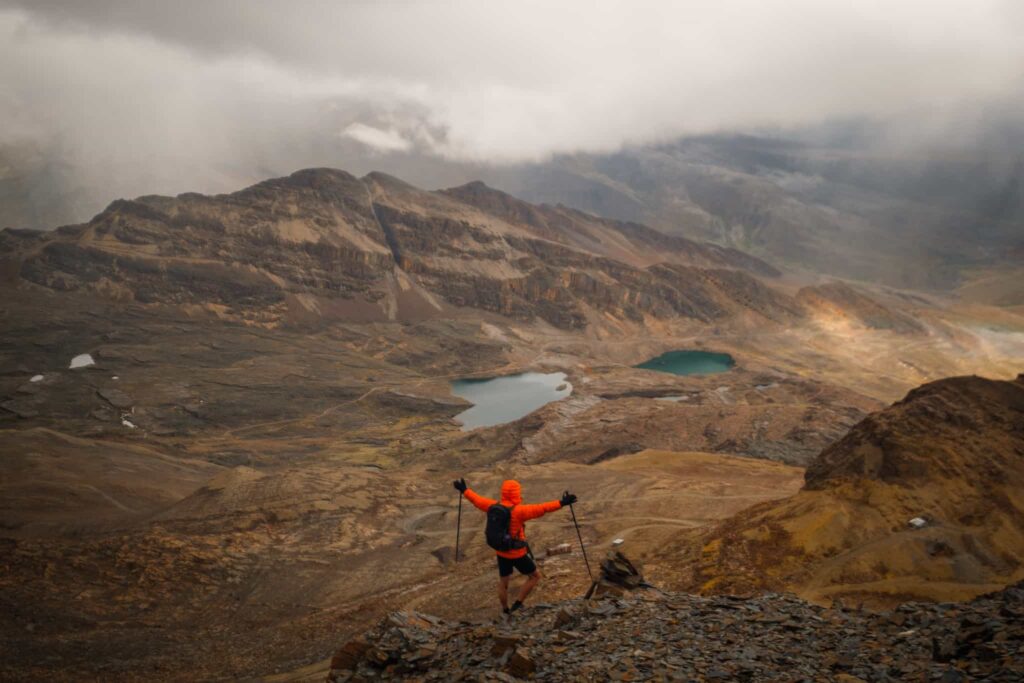
Tips for Combatting Altitude Sickness in Bolivia
So you are preparing to land in La Paz and you have a couple of days before the trip starts in earnest. Good news.
Here are five things you can do to prepare yourself for the journey ahead.
1. Stay hydrated: simply drinking enough fluids will go a long way in generally making you feel better at high altitude.
2. Try to get enough sleep: Rest is another big one. It is not, however, always super easy to sleep through the night without a few wake ups if you are both jet-lagged AND trying to sleep at high altitude suddenly. We recommend taking a non-narcotic sleep aid; a mixture of Benadril (an anti-histamine) and melatonin your first few nights to achieve the “knock out” effect where you can bank a solid 8-10 hours of delicious, uninterrupted sleep.
3. Don’t party: Sampiling the beer and whiskey at the local bars in La Paz during your first few days in the city will have the opposite effect you are trying to achieve. Stay off the booze until after your expedition is finished. It is actually pretty normal to feel a bit hungover during your first few days at altitude so don’t contribute to that feeling by attempting to sample every beer produced in South America on day 1.
4. Go for an acclimatization excursion outside of the city. It is possible to drive 2 hours from La Paz and then walk 15 minutes to a viewpoint called Chacaltaya at 5400 meters. This go high sleep low approach is tried and true at helping the body acclimatize.
5. Take it easy: Don’t try to do any intense hikes or exercise during your first few days in Bolivia. Having a few painkillers on hand like ibuprofen or paracetamol will also help get you through any difficult headache moments.
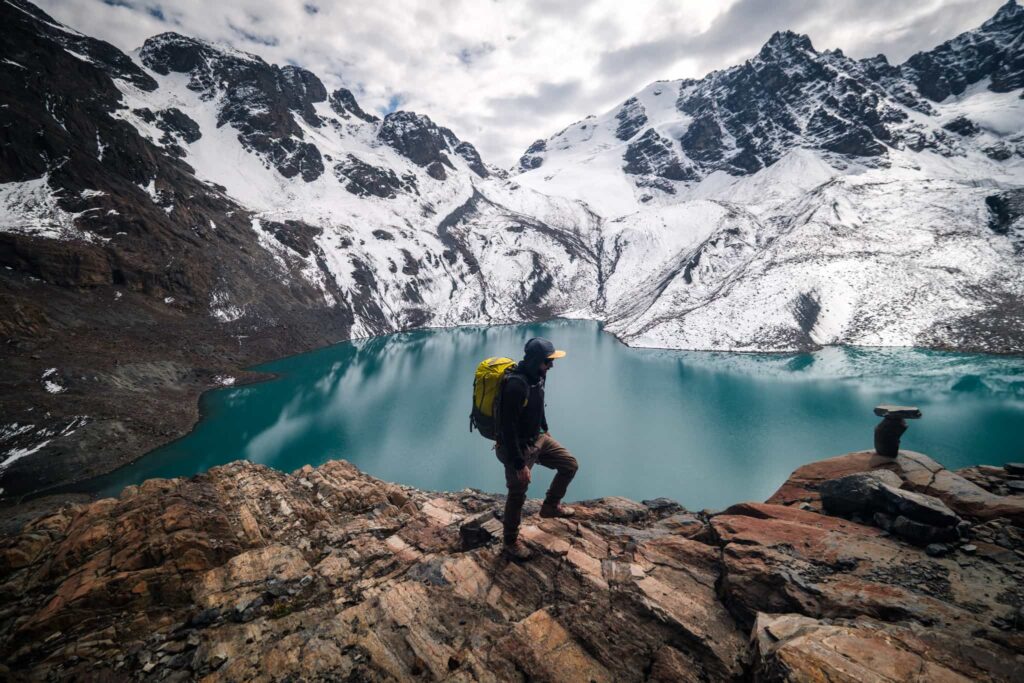
Highest Altitudes in Bolvia: The Mountains
Because you should know what this incredible country has to offer, here is a list of the five peaks with the highest elevation in Bolivia to light the flame of stoke:
1. Sajama
Elevation: 6,542 meters (21,463 feet)
Difficulty: Moderate to Difficult
Description: The highest peak in Bolivia, located in Sajama National Park. The climb involves glacier travel and technical ice climbing. Proper acclimatization and mountaineering skills are required.
2. Illimani
Elevation: 6,438 meters (21,122 feet)
Difficulty: Moderate
Description: This prominent peak near La Paz is a popular climbing destination. The ascent is challenging but non-technical, involving glacier travel and high altitude. Good physical condition and acclimatization are essential.
3. Ancohuma
Elevation: 6,427 meters (21,086 feet)
Difficulty: Moderate
Description: Located in the Cordillera Real, this peak requires glacier travel and can be technically demanding in parts. It is less climbed than some of the other high peaks, adding a sense of remoteness.
4. Illampu
Elevation: 6,368 meters (20,892 feet)
Difficulty: Difficult
Description: Known for its technical difficulty, Illampu offers steep ice and rock climbing routes. It requires a high level of technical skill, experience, and good acclimatization.
5. Parinacota
Elevation: 6,348 meters (20,827 feet)
Difficulty: Moderate
Description: Part of the Payachata volcanic group on the Bolivia-Chile border, Parinacota is a relatively straightforward climb, often considered easier than Sajama. It involves a long hike and glacier travel, but less technical climbing.
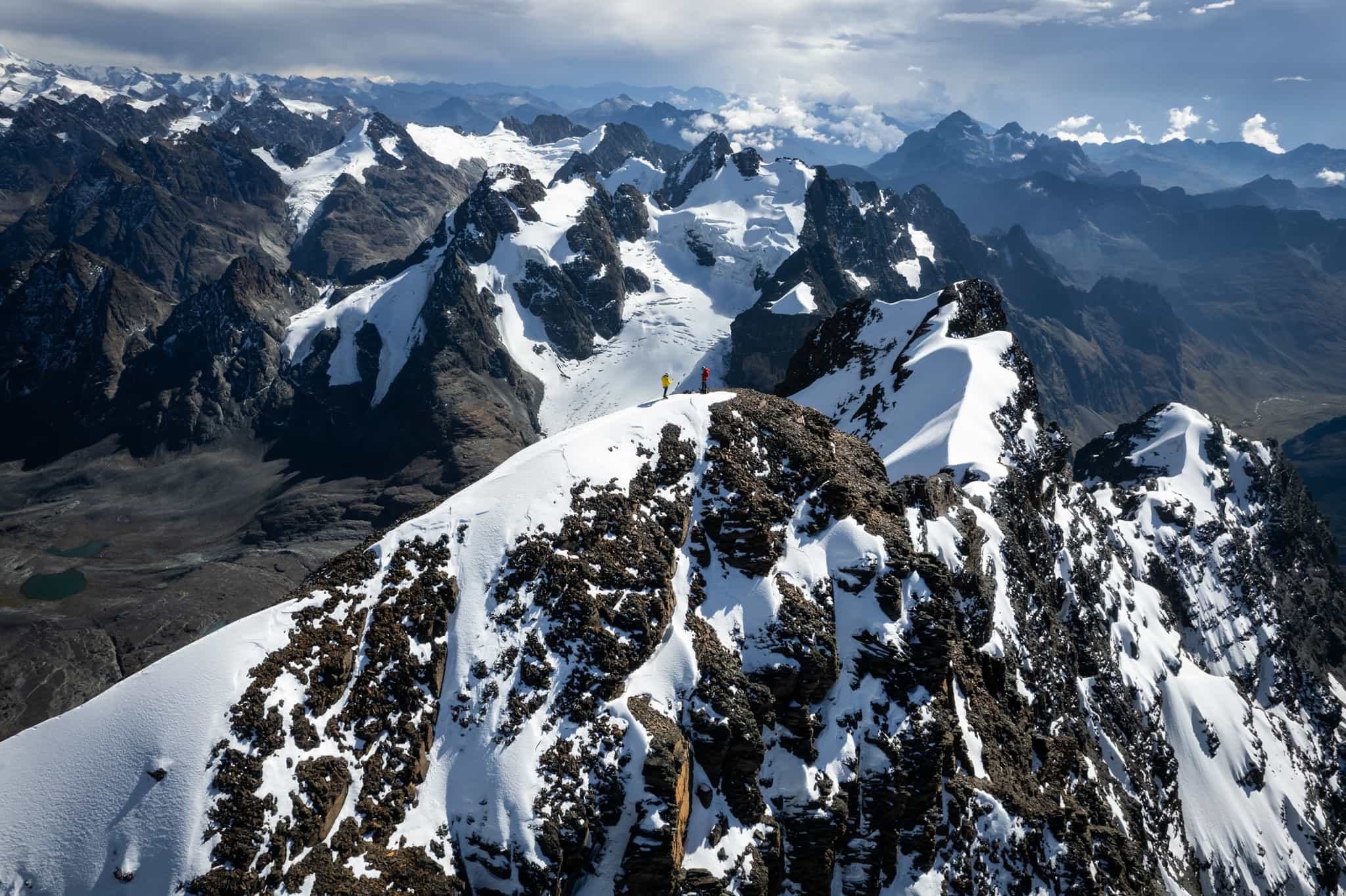
What are the Symptoms of Altitude Sickness?
If you have never been at high altitude before, you may not even know what altitude sickness feels like or what it is exactly.
Altitude sickness, also known as acute mountain sickness (AMS), can affect climbers who ascend to high altitudes too quickly. Understanding the different kinds and recognizing the symptoms is crucial for safety.
Types of Altitude Sickness
Acute Mountain Sickness (AMS): The most common and mildest form of altitude sickness. Symptoms: Headache, nausea, dizziness, fatigue, shortness of breath, loss of appetite, and difficulty sleeping.
The following more serious forms of altitude sickness are very rare and typically experienced by people at extreme high altitudes above 7000-8000 meters.
High-Altitude Cerebral Edema (HACE): A severe and potentially life-threatening condition where the brain swells due to the effects of high altitude. Symptoms: Severe headache, loss of coordination (ataxia), confusion, hallucinations, and unconsciousness. It can develop from AMS if not treated promptly.
High-Altitude Pulmonary Edema (HAPE): Another severe condition where fluid accumulates in the lungs, making breathing difficult.
Symptoms: Shortness of breath even at rest, extreme fatigue, a feeling of suffocation at night, cough producing frothy or bloody sputum, and chest congestion.
Symptoms of Mild Altitude Sickness (AMS)
For new mountaineers, recognizing the early symptoms of AMS is vital for taking prompt action.
It is very important that you are observing your body for changes, discomforts, and general well-being as you spend time at altitude. If you think you have a more serious form of altitude sickness setting in – the best choice is to always loose as much elevation as possible. Never continue gaining altitude if you start to feel seriously ill.
Pro tip: For high-altitude expeditions outside of Bolivia (there is no helicopter rescue service in Bolivia): In general, it’s a great idea to have emergency helicopter rescue insurance in the event of an emergency. Check out our full blog on high-altitude trekking insurance.
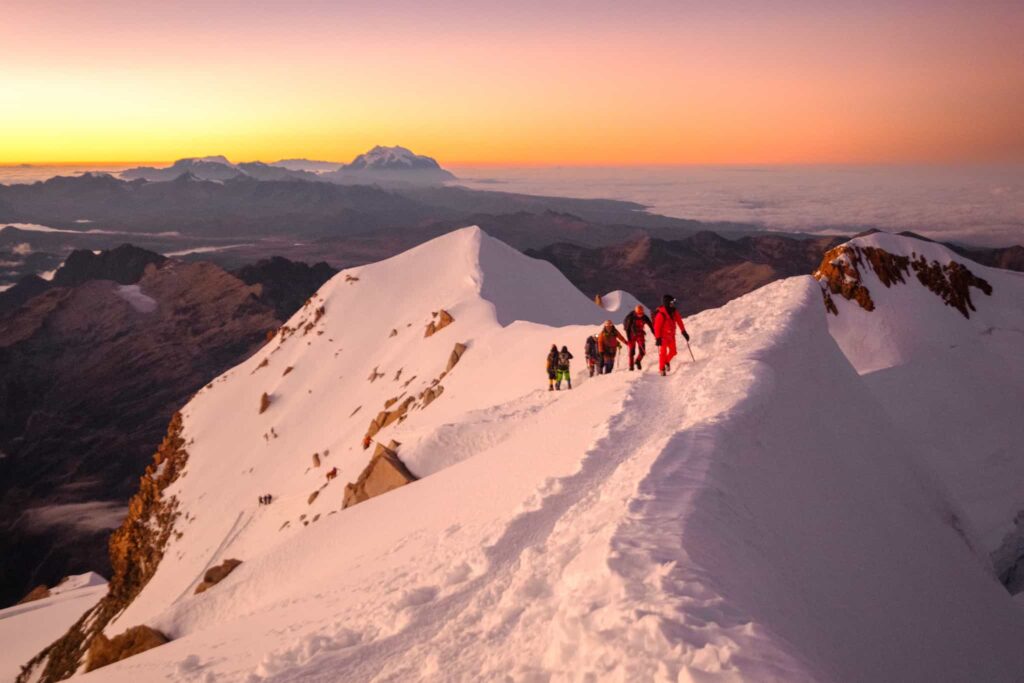
Bolivia Altitude Sickness and Hiking Fitness
People who generally have good fitness and consider themselves strong climbers and hikers might think they will adapt better at altitude than someone less fit.
This is a myth! Of course, having a high level of fitness will only benefit you in the mountains as a general rule – but it has little to do with how your body will react when deprived of available oxygen.
Being physically fit does not guarantee better acclimatization to high altitude. Acclimatization is more about how the body adapts to lower oxygen levels rather than physical fitness. This adaptation involves changes like increased red blood cell production and more efficient oxygen usage. While fit individuals might handle physical exertion better, this doesn’t necessarily mean they will acclimatize faster or be less prone to altitude sickness.
Factors like the speed of ascent, genetics, prior high-altitude experience, and maintaining hydration and nutrition are more crucial for acclimatization. Thus, regardless of fitness, all climbers need to follow best practices for acclimatization, such as ascending gradually and monitoring for altitude sickness symptoms.
The point is, hyper-fit gym bros and gals, leave your ego at the door – otherwise, the high mountains are going to humble you real quick.
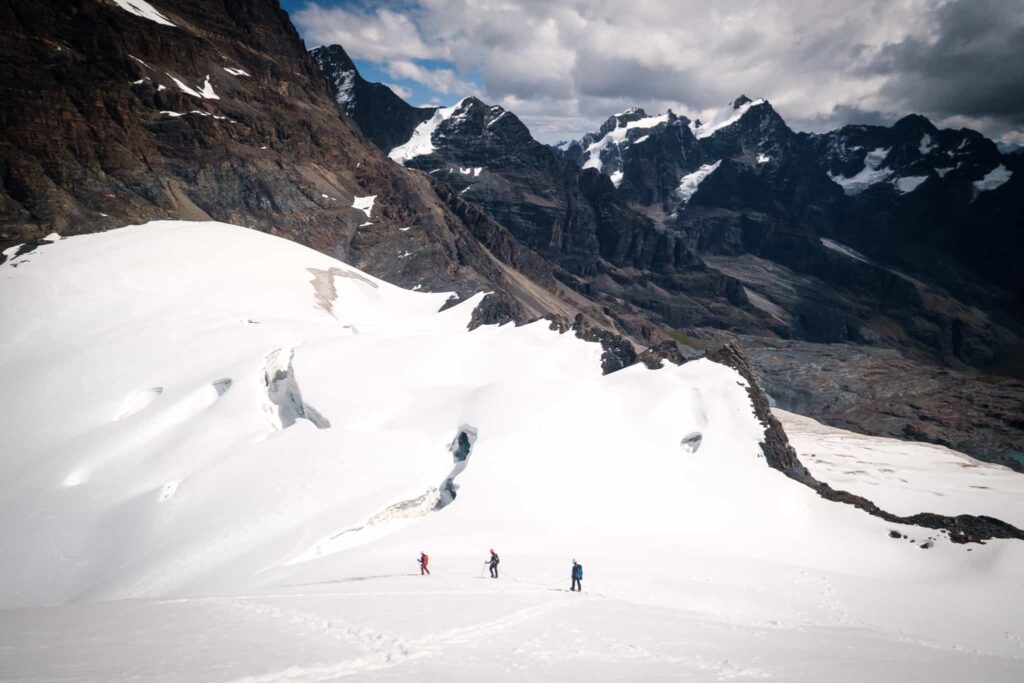
Wrap Up: Battling Altitude Sickness In Bolivia
Whether you are planning an Epic holiday in Bolivia or you just wanted to read up on high-altitude sickness issues – we hope you found this blog informative!
As you might have gathered by now, the high mountains and dealing with altitude sickness in Bolivia and related topics are complex and nuanced issues.
Never has the phrase “every body is different” been more apt when it comes to altitude.
The main thing to consider as you prepare your Bolivia (or any other high-altitude country) itinerary is giving yourself enough time to acclimatize properly. Nothing good can be rushed as they say and this is very true for any activities at altitude.
We hope to meet you in La Paz at some point for an Epic (and hopefully headache-free) trip to Bolivia!
